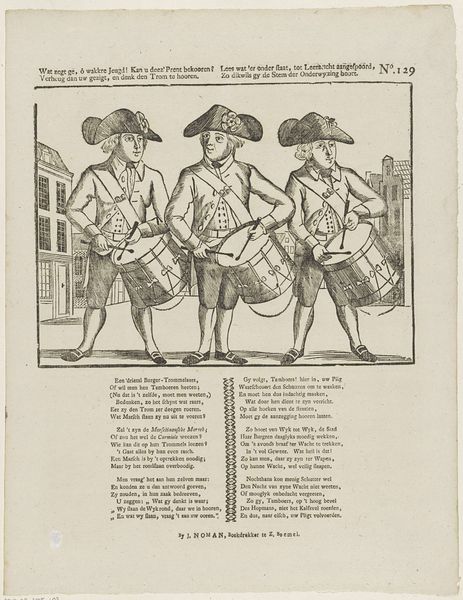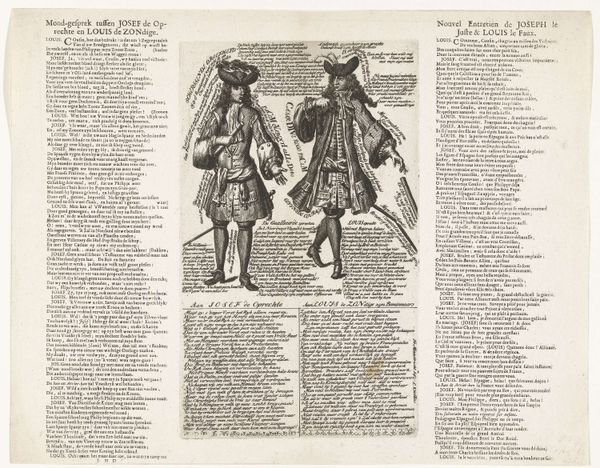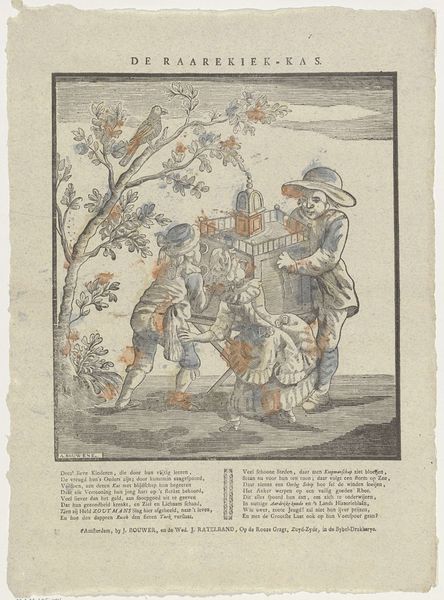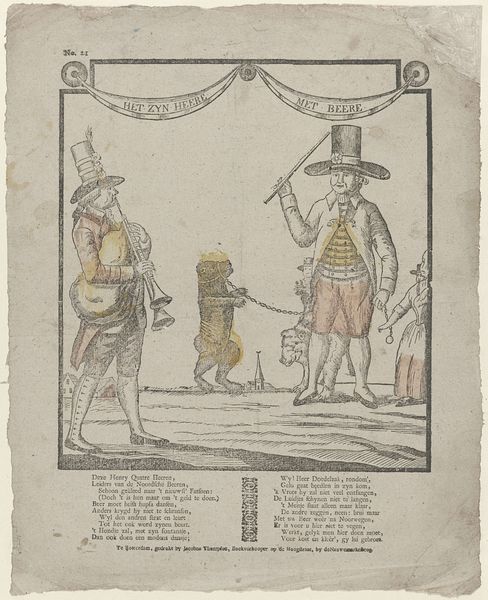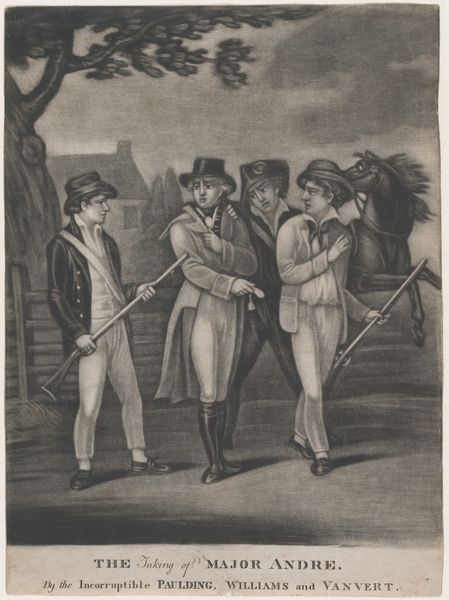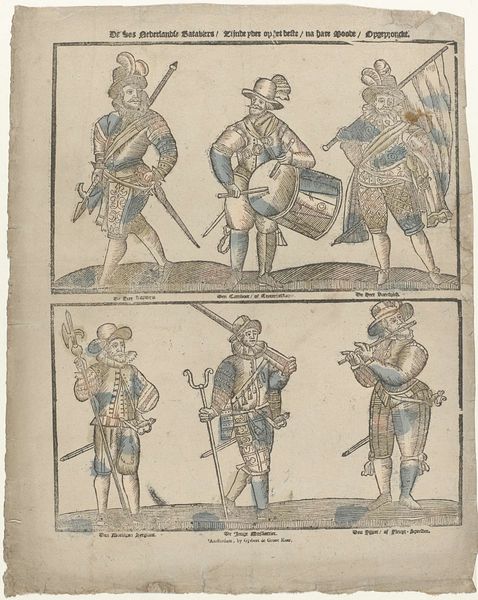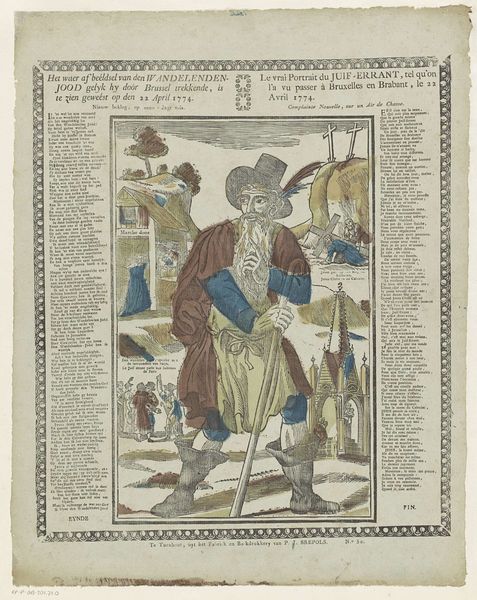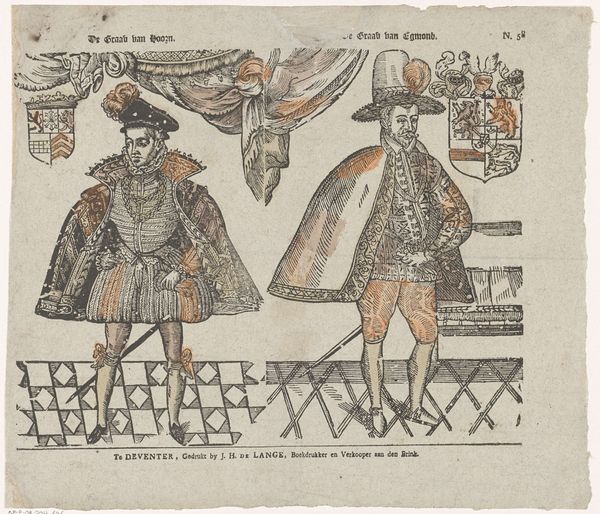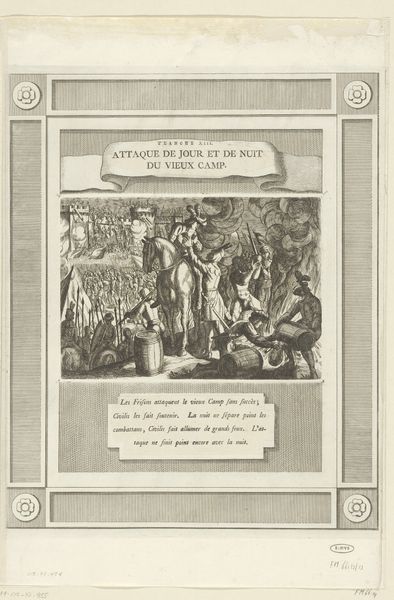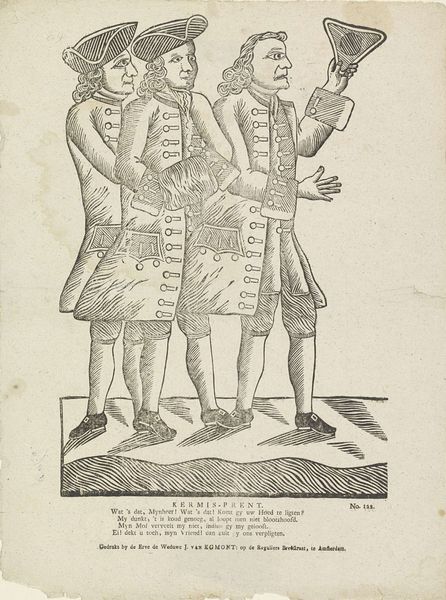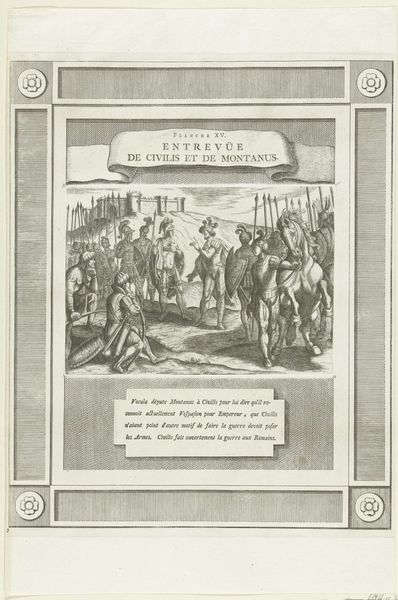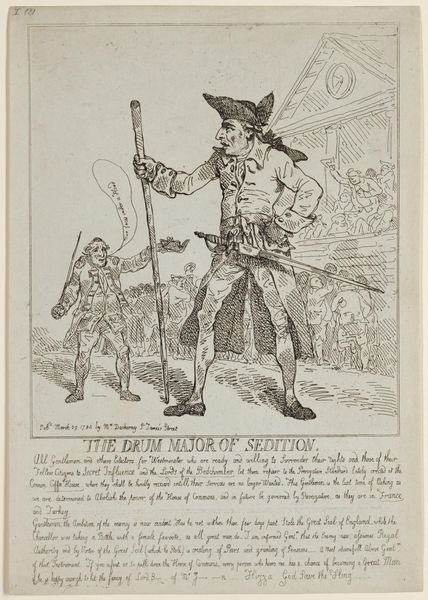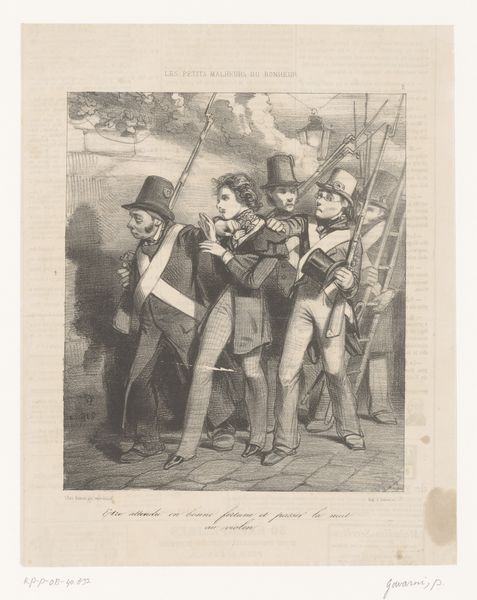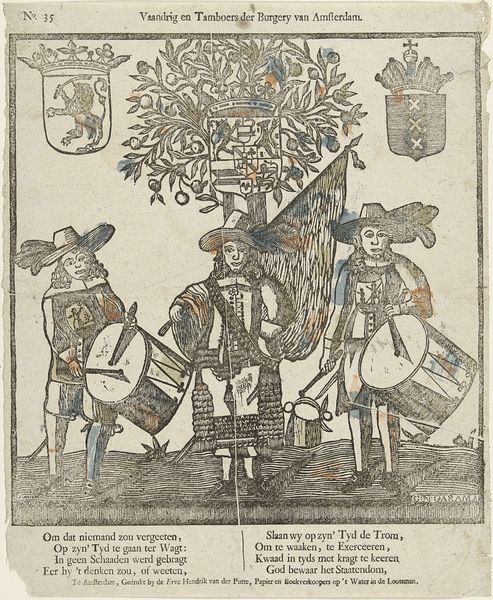
Wat zegt ge, ô wakkre jeugd! Kan u deez' prent bekooren? / Verheug dan uw gezigt, en denk den trom te hooren. / Lees wat 'er obder staat, tot leerzucht aangespoord, / Zo dikwils gy de stem der onderwyzing hoort 1715 - 1813
0:00
0:00
ervenweduwecornelisstichter
Rijksmuseum
Dimensions: height 399 mm, width 303 mm
Copyright: Rijks Museum: Open Domain
Curator: Look at this fascinating genre scene from somewhere between 1715 and 1813 entitled "Wat zegt ge, ô wakkre jeugd! Kan u deez' prent bekooren?" It's attributed to the estate of the widow Cornelis Stichter and features three musicians marching, a print with engraving on paper. Quite a mouthful of a title, isn’t it? Editor: It's so odd. There’s an immediate awkwardness to its mood. These aren’t spirited musicians. It's rather unsettling... something about the rigid poses and the sort of blank expressions on their faces clashes with the implied celebratory sound. Curator: I wonder if that’s a reflection of the times, perhaps? It’s Baroque in style, after all. The rigidness may speak to social mores, and how appearances mattered greatly. Also, those uniforms and the very fact they're drummers carry such a weight of cultural memory... announcing events, calling to arms, parading victories... Editor: The symbolism resonates on a deeper level. It’s the constant beat of the drum. A relentless rhythm. It makes me think of cycles – life, death, rebirth. Also, what is that text beneath the figures doing? And even incorporated into the picture itself in that frame! Is it part of the performance, a score of sorts? Curator: That text is very much part of the artwork, yes. From what I can gather, the work would have originally been included in the “moralising images” that were being printed at the time: popular prints incorporating text with a moral lesson or satire in an accessible way. This image seems to combine street life with some kind of educational aspiration... it encourages the youth to reflect on the text that's right there beneath the musical scene. It speaks to the voice of teaching, really. Editor: It almost has an obsessive quality, wouldn’t you say? Repetition upon repetition. But it gives you an interesting point. I would almost say that the constant visual rhythm emphasizes a type of “truth through dogma”, whatever truth might reside within the lessons on that engraving, don't you think? It feels like propaganda almost... Curator: Very possible! And there's so much crammed into one image. It reflects the energy, anxieties, and ambitions of a society undergoing change, packaged in an easily reproducible and accessible format. It is definitely an interesting artefact. Editor: Right, there's that fascinating tension once again... now as some type of strange pedagogical image. Food for thought, definitely!
Comments
No comments
Be the first to comment and join the conversation on the ultimate creative platform.
